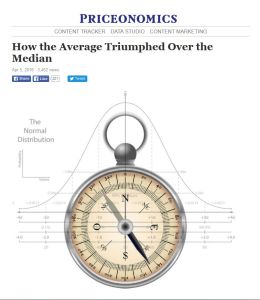Join getAbstract to access the summary!

Join getAbstract to access the summary!
Dan Kopf
How the Average Triumphed Over the Median
Priceonomics, 2016
What's inside?
Calculating the “arithmetic mean” of a given data set may be par for the course, but is it the most accurate measurement?
Recommendation
In today’s world, calculating the “arithmetic mean” of a given data set is considered par for the course. But this wasn’t always the case. In this article, Priceonomics staff writer Dan Kopf offers a brief, but compelling overview of the history of how the mean ultimately triumphed over the “median” as the standard for finding “representative values.” In so doing, Kopf persuasively argues against overreliance upon the mean when analyzing data. getAbstract recommends this article to everyone interested in how to best analyze and showcase statistics.
Summary
About the Author
Dan Kopf is a Priceonomics staff writer. He holds a master’s degree in economics from the London School of Economics.
















Comment on this summary